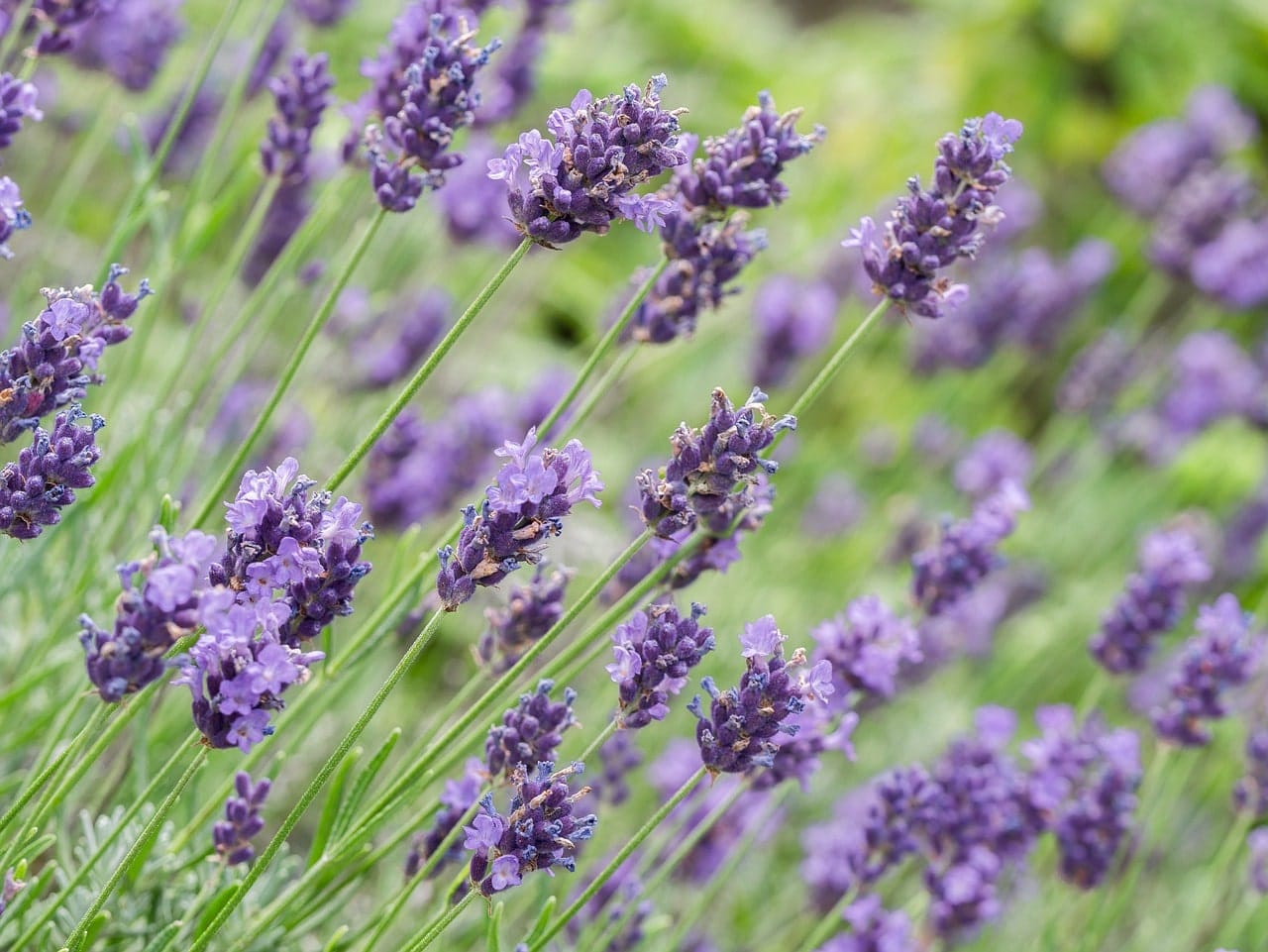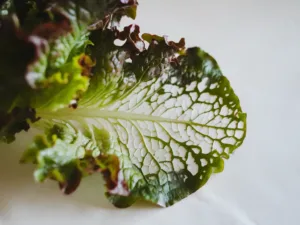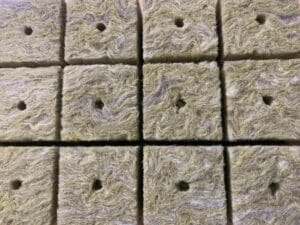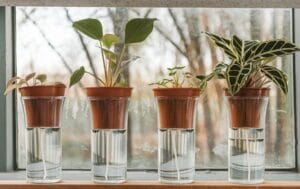Lavender is much more than just a pretty garden plant. It not only brings color and fragrance but also offers numerous practical benefits. As one of the most popular aromatic plants, lavender is used in cosmetics, aromatherapy, herbal teas, and even in cooking. Growing lavender in a hydroponic system can help you get the most out of this versatile plant. Why? Because hydroponics allows precise control over nutrients, water, and light, leading to healthier and more vigorous plants.
Hydroponic cultivation of lavender offers even more advantages. The plants grow faster because they receive the nutrients they need directly. There is no competition from weeds, and many pests that live in the soil are not an issue in hydroponics. Additionally, lavender requires less space in hydroponic systems, which is particularly beneficial if you’re growing indoors or in a small area. Whether you want to grow lavender for personal use or to sell on the market, hydroponics is a fantastic method to achieve a rich and fragrant harvest.
The Best Lavender Varieties for Hydroponics
Not all lavender is the same, and some varieties are particularly well-suited for growing in hydroponic systems. Selecting the right variety is crucial to achieving the desired growth and the best possible yield. Factors such as growth form, flower color, robustness, and ease of care play a role. Here are some varieties that have proven particularly successful:
- Lavandula angustifolia (English Lavender): This variety is perhaps the best-known and most commonly grown type of lavender. It is hardy, frost-resistant, and yields a high amount of essential oil. Its compact growth form and adaptability to different light and temperature conditions make it ideal for hydroponic systems.
- Lavandula stoechas (Spanish Lavender): With its distinctive, butterfly-like flowers, Spanish lavender stands out visually from other varieties. This variety prefers a warm and sunny environment and grows particularly well in hydroponic systems like NFT (Nutrient Film Technique) due to its need for a constant supply of nutrients and water.
- Lavandula dentata (French Lavender): This variety is known for its soft, serrated leaves and its ability to thrive in hot and dry conditions. Lavandula dentata is ideal for aeroponic systems, where the roots hang freely in the air and are regularly misted with a fine nutrient solution.
By choosing the right variety, you can ensure that your lavender not only grows well but also delivers the best results in terms of fragrance, blooms, and oil content.
The Ideal Hydroponic System for Lavender
Lavender is a versatile plant that can thrive in various hydroponic systems. Choosing the right system depends on your personal preferences, available growing space, and budget. Here are the three best hydroponic systems for growing lavender:
- Nutrient Film Technique (NFT): This system works particularly well for lavender because it provides a continuous but thin layer of nutrient solution that flows over the roots of the plants. NFT systems allow excellent oxygenation of the roots and prevent waterlogging, which is ideal for lavender, which loves well-drained conditions.
- Deep Water Culture (DWC): In this system, the roots of the lavender plant hang in a chamber filled with nutrient solution while being continuously supplied with oxygen. Lavender in DWC systems can grow particularly fast because the nutrients are easily accessible and the plants receive ample oxygen.
- Aeroponics: A high-tech and efficient system where the roots hang in the air and are regularly misted with a fine nutrient solution. Aeroponic systems offer optimal oxygen supply and prevent nutrient loss. They are perfect for more sensitive lavender varieties like Lavandula dentata.
Each of these systems has its advantages, and the choice ultimately depends on the specific needs of your lavender and your growing environment. Feel free to experiment to see what works best for you!
Growing Lavender Successfully in Hydroponics: Step by Step
Growing lavender in hydroponics requires some specific steps to promote germination and develop healthy plants. Let’s start with propagation from seeds or cuttings. Seeds often require a longer germination period and special preparation, while cuttings are a faster method to obtain robust plants.
- Selecting Seeds or Cuttings: First, decide whether you want to grow lavender from seeds or prefer cuttings. Seeds often need to be stratified for 2-4 weeks, meaning they are exposed to a cool, moist environment to encourage germination. Cuttings, on the other hand, can be placed directly into a propagation medium.
- Propagation in Seed Trays or Plugs: For hydroponic propagation, seed trays or plugs (like rockwool) are ideal. These provide good moisture control and are sterile, minimizing mold and disease. Place the seeds or cuttings in the plugs, keep them moist but not too wet, and ensure they receive enough light—about 12-16 hours per day.
- Transplanting into the Hydroponic System: Once the plants have developed sufficient roots and are about 5-10 cm tall, they can be transferred to the chosen hydroponic system (e.g., NFT or DWC). Ensure that the nutrient solution has the correct pH and EC values (see below) and start with a lower concentration to acclimate the plants to the new system.
With these steps, you’re well-equipped to grow strong and healthy lavender plants in your hydroponic garden!
The Best Substrate for Hydroponic Lavender Cultivation
The right substrate is crucial for the success of lavender in hydroponics. Lavender needs a substrate that allows good drainage and aeration of the roots. Some of the best options are:
- Rockwool: This popular hydroponic substrate offers excellent water retention and aeration. It is particularly suitable for lavender as it prevents root diseases and ensures an even supply of moisture and nutrients.
- Coconut Fiber: A renewable substrate that is lightweight, well-drained, and moisture-regulating. Coconut fiber also has the advantage of protecting the roots from temperature fluctuations and providing good aeration.
- Perlite: Ideal for lavender, which prefers dry conditions. Perlite provides excellent drainage and aeration, but it is often best used in combination with other substrates like vermiculite or coconut fiber.
Each of these substrates has its own advantages. The choice depends on how much moisture your lavender needs and the type of hydroponic system you are using. For NFT systems, rockwool might be more suitable, while coconut fiber and perlite work well in DWC or aeroponic systems.
Optimal Temperature Conditions for Lavender
Lavender is a sun-loving plant that prefers warm and well-ventilated conditions. In hydroponics, temperature and humidity are crucial for the plant’s growth and health. Here are some important points for optimal temperature control:
- Growth Phase: During growth, lavender prefers a temperature of about 20-25°C. At these temperatures, the plants thrive best and develop lush foliage. Keep the daytime temperature in this range and let it drop to about 15-18°C at night to promote healthy growth.
- Ventilation and Humidity: Lavender thrives in well-ventilated environments with relatively low humidity (about 40-50%). Ensure that the air circulates and avoid stagnant air, which can lead to fungal diseases. A small fan can help promote air movement and strengthen the plants.
- Protection from Extreme Temperatures: Be careful to avoid extreme temperatures. If it gets too hot, lavender may wilt or show stress, while too cold temperatures can slow growth. In an indoor hydroponic system, you can easily regulate the temperature with a heating mat or a small heater.
By properly controlling the temperature, you can ensure that your lavender remains healthy and achieves optimal bloom and fragrance development.
Light Requirements for a Lush Lavender Harvest
Lavender is a sun-loving plant that needs plenty of light to grow healthily and develop abundant blooms. In a hydroponic setup, especially when growing indoors, providing enough light is particularly important. Here are the key points to consider:
- Light Intensity and Duration: Lavender requires about 12-16 hours of light daily. For indoor cultivation, LED grow lights are the best choice as they are energy-efficient and offer a broad light spectrum necessary for plant growth. The light intensity should be around 2,000 to 3,000 lumens per square meter to promote strong and compact growth.
- Light Color: During growth, lavender needs more blue light to promote healthy leaf development, and during flowering, more red light to maximize flower production. Many LED grow lights offer adjustable settings for different light phases, allowing you to optimize light conditions for each growth phase.
- Placement of Lights: The light source should be placed about 30-45 cm above the plants. This ensures optimal light distribution without burning or stressing the plants. Regularly check the leaves for signs of light deficiency (yellow or limp leaves) or excess (burned tips) and adjust the lighting accordingly.
With the right light supply, you ensure that your lavender not only grows lushly but also develops maximum blooms and an intense fragrance.
PH and EC Values for Healthy Lavender Growth
For optimal growth in hydroponics, the pH values and the electrical conductivity (EC) of the water are crucial. These two factors influence nutrient uptake and the overall health of your lavender plants. Here are the ideal values and tips for control:
- Recommended pH Values: Lavender thrives best in slightly acidic to neutral water with a pH value between 6.0 and 7.0. A pH value that is too low can lead to nutrient blockages, while a pH value that is too high makes nutrient uptake difficult. Regularly check the pH value of your nutrient solution with a pH meter and use pH-Up or pH-Down solutions to adjust the values.
- Electrical Conductivity (EC): The EC value indicates how many nutrients are present in the solution. For lavender, the EC value should be between 1.2 and 1.8 mS/cm. EC values that are too high can lead to salt deposits and root damage, while values that are too low indicate insufficient nutrient supply. Regularly test the EC value and adjust the nutrient concentration accordingly.
- Control and Adjustment: Regularly changing the nutrient solution, about every two weeks, helps ensure stable pH and EC values. Be sure to use fresh, filtered water and dose the nutrient solutions according to the manufacturer’s instructions.
By monitoring and adjusting the pH and EC values, you ensure that your lavender plants are optimally supplied and show healthy, vigorous growth.
The Right Fertilization for Hydroponic Lavender
Fertilization is another important factor for the successful cultivation of lavender in hydroponics. Since lavender is generally a robust plant, it requires a balanced ratio of macro and micronutrients to thrive. Here are the key aspects to consider:
- Nutrient Needs of Lavender: Lavender needs a balanced mix of nitrogen (N), phosphorus (P), and potassium (K), with the ratio being about 3-1-2 during the growth phase. During the flowering phase, the phosphorus content should be increased to support flower production (e.g., ratio 2-4-4). Additionally, micronutrients such as calcium, magnesium, and iron are important to avoid deficiencies and maintain a healthy plant.
- Use of Liquid Nutrient Solutions: Liquid fertilizers are particularly suitable for hydroponic cultivation as they are easy to dose and dissolve quickly in the nutrient solution. Be sure to use nutrient solutions specifically designed for hydroponic systems, as they offer the right balance of nutrients and are pH-neutral.
- Fertilization Cycle and Frequency: Start with a lower concentration and gradually increase it to acclimate the plants to the nutrients. A typical fertilization cycle for lavender in hydroponics can occur weekly or every two weeks. Be sure to monitor the EC value to avoid over or under-supply.
With the right fertilization and regular monitoring of the nutrient solution, you can ensure that your lavender remains healthy, grows vigorously, and develops a rich bloom.
Harvesting Hydroponic Lavender: Timing and Techniques
Harvesting lavender is one of the most rewarding parts of the cultivation process. To make the most of your lavender in terms of fragrance, taste, and essential oils, the right timing and technique are crucial. Here are the key tips for a successful lavender harvest:
- The Right Harvest Time: The ideal time to harvest lavender is when about one-third to half of the flowers on the stem are open. At this point, the plant contains the highest concentration of essential oils, resulting in more intense fragrance and flavor quality. Harvesting should preferably take place in the early morning hours when the essential oils are at their strongest.
- Cutting Technique: Use a clean, sharp pair of garden shears or a sickle to cut the lavender stems about 2 to 5 cm above the woody part of the plant. This technique not only promotes a richer bloom in the next cycle but also keeps the plants compact and healthy. Be careful not to cut too deeply to avoid weakening the plant.
- After the Harvest: Once you have harvested the lavender, tie it into small bundles and hang them upside down in a cool, dry, and well-ventilated place. This preserves the fragrance and quality. If you are using lavender for oil extraction, it is important to distill the flowers as soon as possible after harvest to maximize the quality of the essential oil.
By using the right harvesting technique, you can ensure that your lavender is not only visually appealing but also fully unleashes the potential of its essential oils.
Avoiding Diseases and Pests in Lavender Cultivation
Although lavender is known for its resilience, diseases and pests can occasionally occur even in hydroponic systems. Careful monitoring and prevention are key to maintaining healthy plants. Here are the most common issues and how you can prevent them:
- Fungal Diseases: Fungal infections such as gray mold (Botrytis) or root rot can occur if humidity is too high or ventilation is insufficient. To prevent this, ensure that your growing area is well-ventilated and that humidity remains in the optimal range (40-50%). Use fungicides only as a last resort and opt for biological agents whenever possible.
- Aphids and Spider Mites: These small insects can weaken lavender plants and discolor the leaves. Regularly check the leaves, especially the undersides, for early signs of infestation. A mixture of water and a drop of biological dish soap can be used as a gentle spray. For more severe infestations, natural predators like ladybugs or predatory mites can help control the population.
- Preventive Measures: Use sterilized substrate and clean water to prevent the introduction of pathogens. Regularly changing the nutrient solution and cleaning the system also help prevent diseases. Plant strengtheners based on seaweed or silicon can increase the plants’ resistance to diseases.
With these preventive measures and attentive care, your lavender plants will remain healthy and productive.
Plant-Specific Tips for Even Better Lavender Yields
To get the most out of your lavender cultivation, there are some additional tips and tricks specifically tailored to this fragrant plant. Here are some proven methods to make your hydroponic lavender even more successful:
- Pruning Techniques: To keep your lavender compact and blooming, regular pruning is essential. Lightly trim the plants in spring to encourage the growth of new shoots, and perform a light shaping cut after the first bloom. However, avoid heavy pruning in the fall, as this can weaken the plant.
- Stress-Aware Care: Lavender loves a little “stress” treatment to increase essential oil production. This means you can occasionally keep the plants drier or expose them to direct sunlight. This slight stress encourages the production of fragrances, makes the plants more robust, and results in more intense blooms.
- Optimizing Nutrient Composition: During the flowering period, you can slightly adjust the nutrient composition by increasing the potassium content. Potassium promotes flower formation and strengthens the plant. Ensure that all nutrients are well-balanced to avoid deficiencies.
With these tips and tricks, your lavender cultivation in hydroponics will be even more productive and fragrant.
Your Path to Perfect Hydroponic Lavender
Growing lavender in hydroponics can not only be a wonderful way to enjoy this aromatic plant but also an exciting and rewarding experience for any gardener—whether beginner or professional. By precisely controlling nutrients, light, temperature, and moisture, optimal growth can be achieved, offering you a rich harvest of fragrant lavender blooms.
If you follow the steps discussed in this guide, from selecting the right lavender varieties to choosing the appropriate hydroponic system to careful care and harvesting, nothing stands in the way of your success. Remember that lavender is a resilient plant that thrives beautifully in a hydroponic environment with a little patience and the right techniques.
So why not start right away? With a little planning and care, you can create your own small lavender oasis that enriches not only your garden but also your senses. Whether for personal use or for sale, hydroponic lavender is an investment that pays off!
Next Steps and Further Tips
Now that you know everything important about hydroponic lavender cultivation, it’s time to get started yourself. Here are some additional steps and tips to expand your knowledge and optimize your cultivation:
- Learn More About Essential Oil Distillation: Lavender is known for its aromatic essential oils. Explore the various methods of distillation to produce your own high-quality lavender oil.
- Experiment with Companion Planting: Integrate other plants into your hydroponic system that harmonize well with lavender. Thyme and rosemary are examples of herbs that require similar growing conditions and thrive well together.
- Share Your Experiences: Join our community of hydroponic enthusiasts to exchange tips and experiences. The knowledge of others can help you refine your cultivation methods and try out new ideas.
With these additional tips and the willingness to continually learn and experiment, you are well on your way to becoming a true master in hydroponic lavender cultivation. Good luck and enjoyment with your hydroponic gardening project!







